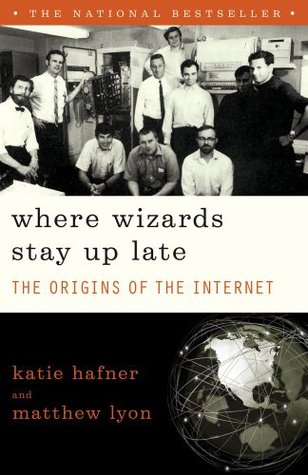More on this book
Community
Kindle Notes & Highlights
by
Katie Hafner
Read between
April 3 - April 4, 2016
The project had embodied the most peaceful intentions—to link computers at scientific laboratories across the country so that researchers might share computer resources. Taylor knew the ARPANET and its progeny, the Internet, had nothing to do with supporting or surviving war—never did.Yet he felt fairly alone in carrying that knowledge.
In another example of AT&T’s zeal, the company sued an undertaker in the Midwest who was giving out free plastic phone-book covers. AT&T argued that a plastic phone-book cover obscured the advertisement on the cover of the Yellow Pages and reduced the value of the paid advertising, revenues that helped reduce the cost of telephone service.
“The process of technological development is like building a cathedral,” remarked Baran years later. “Over the course of several hundred years new people come along and each lays down a block on top of the old foundations, each saying, ‘I built a cathedral.’Next month another block is placed atop the previous one. Then comes along an historian who asks, ‘Well, who built the cathedral?’ Peter added some stones here, and Paul added a few more. If you are not careful, you can con yourself into believing that you did the most important part. But the reality is that each contribution has to follow
...more
The firm had also become well known as a place whose hiring philosophy was to recruit MIT dropouts. The idea was that if they could get into MIT they were smart, and if they dropped out, you could get them cheaper.
Who but a few government bureaucrats or computer scientists would ever use a computer network? It wasn’t as if computing had a mass market like the television networks or the phone company.
But in ancient Greek, protokollon meant the first leaf of a volume, a flyleaf attached to the top of a papyrus scroll that contained a synopsis of the manuscript, its authentication, and the date. Indeed, the word referring to the top of a scroll corresponded well to a packet’s header, the part of the packet containing address information.
Roberts, ever so correctly, had foreseen the likelihood that scheduling a highly visible public demonstration for October 1972 would build pressure on the community to mobilize and make sure the network would be functioning flawlessly by that date. Kahn too acknowledged that the demonstration was “set up to force the utility of the network to occur to the end users.”
“Standards should be discovered, not decreed,” said one computer scientist in the TCP/IP faction. Seldom has it worked any other way.


